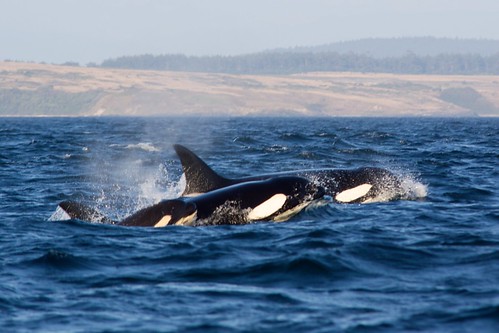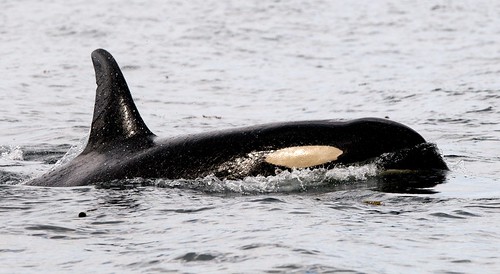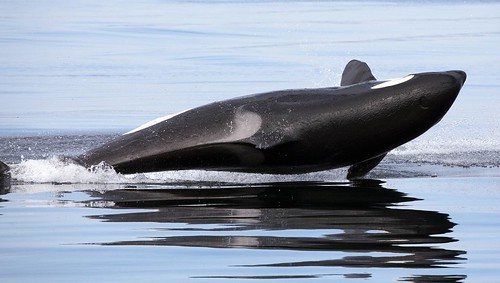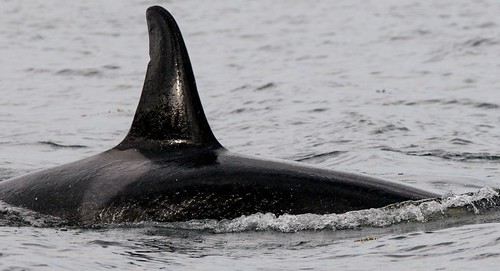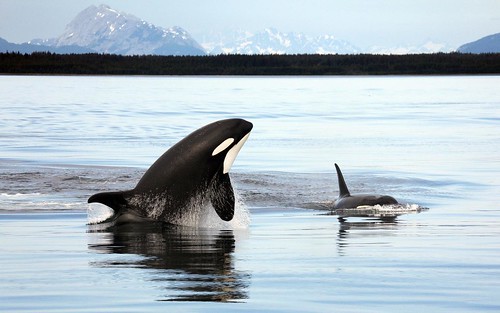Last week's Wildlife Wednesday was all about orcas. There are so many interesting facts about these animals it just wouldn't fit all in one week. Ready for part 2 of our orca animal facts?

 by Christopher.Michel
by Christopher.Michel
Orcas live in groups called pods. Pods can have up to 40 members. Pods sometimes combine to form groups of over 100 in number.
Orca pods are led by the females.
There are thought to be 3 different types of pods - resident, transient and off shore.
Transient pods constantly move around, following food sources. Transient pods are small. Young whales usually leave the group when a sibling is born.
Resident pods tend to stay in one area and usually are the largest in size. In resident pods, young whales of both genders stay with their mothers.
Offshore pods stay in open water.
Some of the most well studied orcas live in the North Pacific, where these 3 different types of pods have been observed. The resident pods fed primarily on fish. The transient pod ate mostly marine mammals and sea birds. The offshore pod primarily hunted sharks.
Pod specific hunting techniques and vocalizations are often passed from generation to generation in pods.
Orcas have 3 times main sounds that they make - whistles, click and discrete calls. Pods have their own set of discrete calls, or dialect. These calls are different from those of other pods.
Clicks are used for echolocation.
 by winkyintheuk
by winkyintheuk The dorsal fin on a male can be 6 feet high and triangular in shape. Females and immature males have dorsal fins about 3 feet high and are more curved.
They gray spot behind the dorsal fin is referred to as a 'Saddle spot'. The shape of the saddle spot and the dorsal fin are unique to each whale.
Female orcas can live up to 90 years old.
Orcas and pilot whales are the only non human mammals that experience menopause.
Orcas give birth every 3-10 years and have a 17 month long pregnancy.
Orcas don't mate with members of their own pods.
A baby orca weighs about 400 pounds.Did you enjoy this week of orca facts? What was your favorite fact? Any animal suggestions for a future Wildlife Wednesday?


